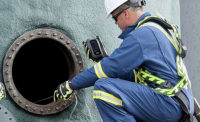With safety expectations higher and workplace regulations tighter than ever, training must be comprehensive, effective and contain key components of best science and best practice.
Certification is only the beginning. People lose knowledge and skills quickly unless they are refreshed and repeated at regular intervals, and this is no exception with first aid, CPR or even AED use. When the goal is readiness to save lives, it is essential that employees engage in regular training where the core principals of basic training are continually repeated and re-visited.
The industry’s best training programs assist safety managers in structuring an in-service training program for employees. For example, the American Red Cross Team First Aid Exercises course not only reinforces the individual skills employees need to perform First Aid, CPR and use an AED, it allows co-workers to practice these skills as a team in a safe, simulated environment.
“Multiple studies show the need for ongoing reviews and drills, and training keeps skills fresh and improves both accuracy and speed when performing this life-saving activity,” said Tom Heneghan, a senior project manager at the American Red Cross. “We strongly encourage employees who might be responding to a medical emergency to practice doing so, as a team, before the real emergency happens.”
In the span of an employee’s career, he or she may never respond to an emergency. But if one happens, it is imperative that training can be put into use. Regular in-service drills help employees increase their speed and confidence in a true emergency, the exercises serve another vital purpose – they keep skills alive.
This is essential because CPR skills begin to decline as soon as two weeks after training, rendering 87 percent of trained employees ineffective at CPR within six months of certification, according to research from The Journal of Acute and Critical Care and BMJ. Enacting regular training into workplace safety programs ensures that employees review and retain the knowledge and skills they need to act if, and when, the time comes.
The Red Cross has long advocated realistic training and drilling in the workplace. Joe Gray, who leads the Red Cross Instructor Training Academies, observes of those responding to emergencies, “If any of them fails to do their assigned task, the rescue breaks. It goes back to the in-service training.”
Olympic track and field great Jesse Owens succinctly described the necessity of good training for his sport, but he might have easily been talking about a workplace emergency: “A lifetime of training for just ten seconds,” he said.
Though products and the way they are built will always change, the need for effectively trained employees remains constant – a priority that never goes out of style.




